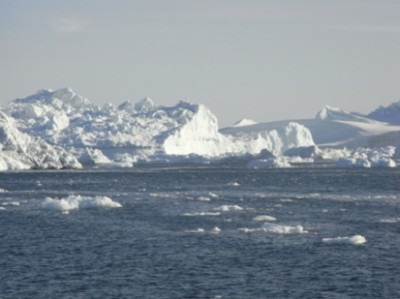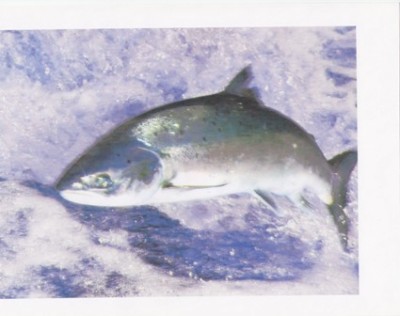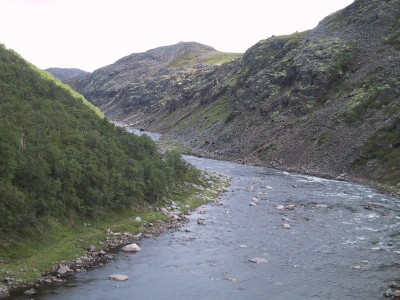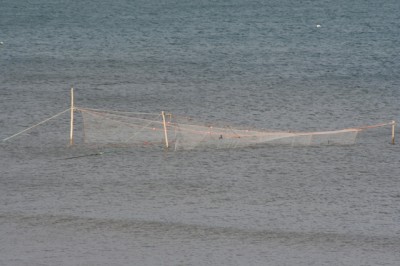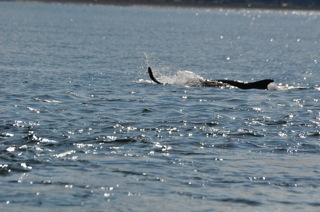During their time here they held interviews and filmed the famous Celtic engraved salmon on the standing stone in Glamis Manse garden, the South Esk at Kinnaird, Finavon and Inshewan, the Dee at Altries, the Moray Firth, Spey on the Brae Water and Usan Fisheries near Montrose. Financial contributions have come from the Dee and Esk Fishery Boards and from proprietors on the Spey, as well as the main contribution from AST.
‘Lost at Sea’ picks up the story of that decline and the measures being taken to address the threats to survival where human intervention can make a difference. Filming has taken place in Canada, USA, Iceland, Norway, Ireland and now in Scotland. It is a truly international production. Its total budget is well over $500,000 and it has been five years in the making, taking the cue from the results of the highly acclaimed SALSEA project.
Killing Atlantic salmon at sea: coastal nets off the South Esk estuary
No-one is making assumptions about the productivity of the freshwater environment. Fishery managers are fully aware of the need for every salmon river to produce the maximum number possible of naturally generated smolts, because it is smolt production that is the baseline for genetic diversity and numbers of returning adult fish. While not every river is producing enough smolts, it is fair to claim that many are.
Where it all begins: the Rottal Burn in Glen Clova
The issue is what happens to those smolts when they hit salt water. We know that well over 90% of them die at sea.
Why?
Where?
How?
What can be done to reduce mortality?
Above all, how can we bring more adult salmon back into our rivers?
‘Lost at Sea’ looks at the whole lives of wild Atlantic salmon, the relationship of this iconic species through the millenia of history with man, how rural communities still depend on these fish, how the cultures of the North Artlantic countries continue to be influenced by the salmon, and where things started to go wrong.
The film explores human exploitation, lethal and otherwise, of wild salmon, the impacts of aquaculture, pollution, predation – all in the context of climate change, the warming ocean and massive, unpredictable changes to weather patrterns, ocean currents, erratic temperatures and consequent availability of prey species on which salmon depend.
Dolphins killing salmon in the Moray Firth
The film is superbly filmed and assembled by a highly proferssional and experienced US team, led by Deidre Brennan. It could be seen as a nostalgic lament for the lost King of Fish by people who see its decline as inevitable. On the other hand it could be seen as a wake-up call for peoples of the North Atlantic region to put pressure on politicians and decision-makers to take action – where effective outcomes are possible – and halt the decline.
The film will be distributed early in 2015. It will be the greatest film about wild Atlantic salmon at sea ever made. It has the pedigree, the passion and the support to change the landscape for ever.
TA
